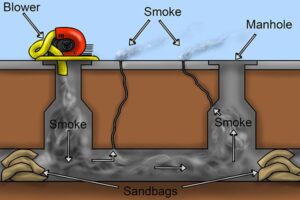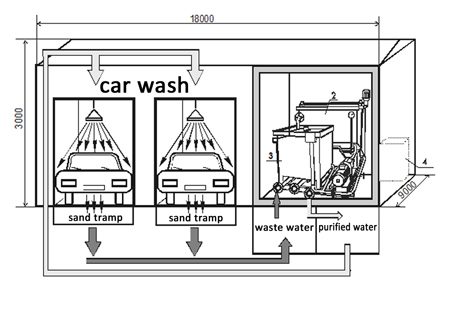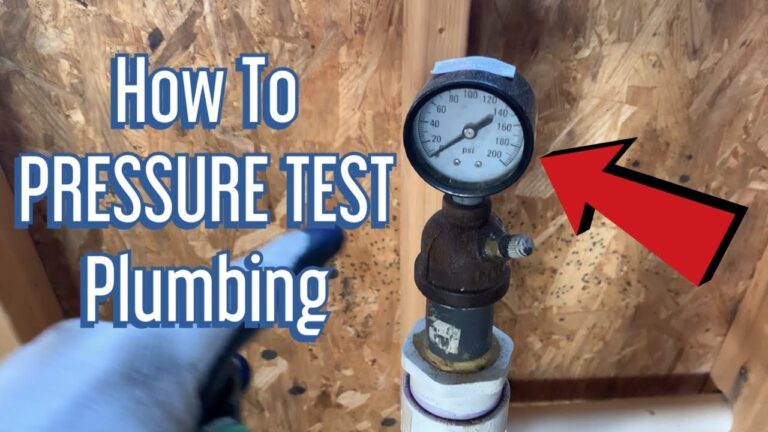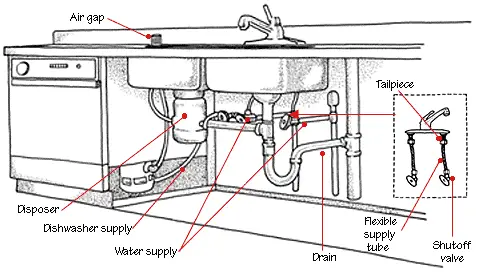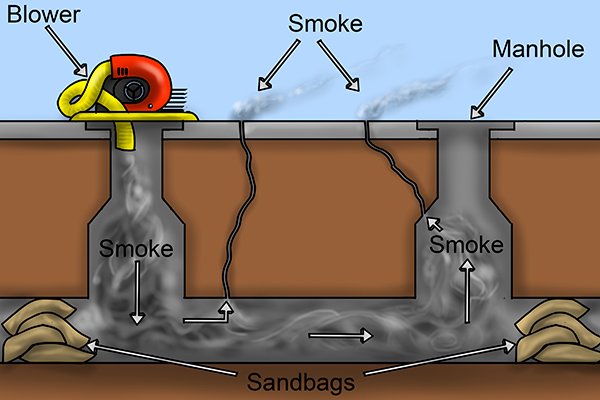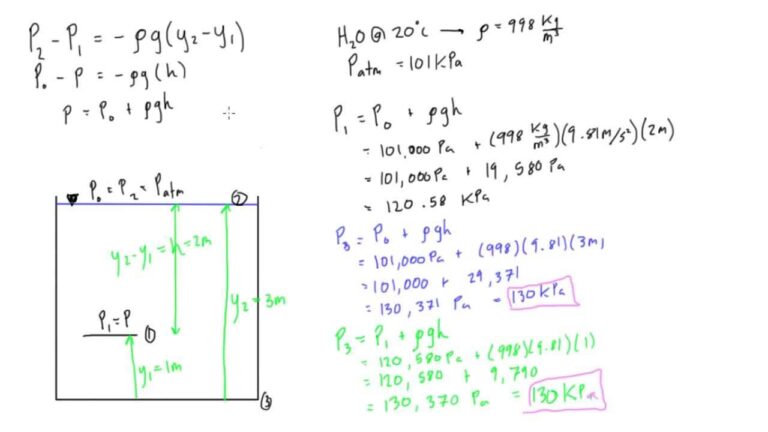What Is A Smoke Test For Plumbing?
A smoke test for plumbing is a type of test used to detect invisible leaks in a plumbing system. This type of test involves the use of special smoke generating machines to generate a smoke-like vapor which is then pumped through the plumbing system. The smoke will travel through any openings or cracks in the system, indicating where there may be a leak. This type of test is an important step in the maintenance of a plumbing system, as it can help to identify and repair any unseen leaks that could cause damage or disruption to the system.
Definition and Purpose of Smoke Tests
Smoke tests for plumbing are an important part of the inspection process for new or existing plumbing systems. They are used to detect leaks and blockages in a plumbing system, as well as evaluate the overall condition of the system. Smoke tests involve releasing a harmless, odorless, non-toxic smoke into the plumbing system, and then monitoring the flow of the smoke. The smoke should follow the system in the intended direction and should not be visible or detectable at any point. If the smoke does not flow in the intended direction, or if it is visible or detectable, this can indicate a leak or blockage in the system. Smoke tests are an essential tool for any plumbing inspector, as they can identify potential problems before they become serious and costly repairs.
Preparing for a Smoke Test
A smoke test is an important part of the plumbing process. It’s designed to detect leaks in the system, ensuring that everything is functioning properly and safely. Preparing for a smoke test should be done with great care and attention to detail.
The first step is to make sure the plumbing system is clear of any debris or obstructions that could interfere with the smoke test. This means running water through the lines and clearing any clogs or blockages. The plumbing system must also be properly sealed in order to ensure the smoke test is effective.
Once the system is prepared, the actual smoke test can begin. The smoke used in a smoke test is usually a harmless, non-toxic gas. The gas is pumped through the plumbing system and any leaks or cracks in the system will be revealed as the gas escapes. The plumber can then assess the damage and make the necessary repairs.
A smoke test is a valuable tool for identifying and fixing plumbing problems before they become more serious or costly. However, it is important to remember that a smoke test is just one part of a comprehensive plumbing maintenance plan. Regular inspections, preventative maintenance, and emergency repairs are also important for keeping your plumbing system running smoothly.
Benefits of Smoke Tests
Smoke tests are an important preventive maintenance procedure for plumbing systems. This technique is used to identify leaks, blockages, and other issues before they become more serious and costly problems. Smoke testing is a non-invasive procedure that uses an inert, non-toxic gas to test the integrity of a plumbing system. Benefits of smoke testing include identifying problems quickly, preventing water damage, and avoiding costly repairs.
Smoke testing is relatively simple and cost-effective, and can be used to test both residential and commercial plumbing systems. When performed regularly, smoke testing can help to detect leaks and blockages that may be too small to be noticed by the naked eye. Additionally, smoke testing can detect breaks in water lines, issues with septic systems, and other potential issues.
Smoke testing is also a great way to ensure that all of the components of a plumbing system are functioning properly. By identifying any issues quickly, you can avoid costly repairs down the line. Additionally, smoke testing can also help to reduce the risk of water damage, which can be expensive to repair.
Overall, smoke tests for plumbing systems are an excellent way to ensure that your plumbing system is functioning properly and that any issues are identified and addressed quickly. By performing regular smoke tests, you can save money on repairs and prevent water damage.
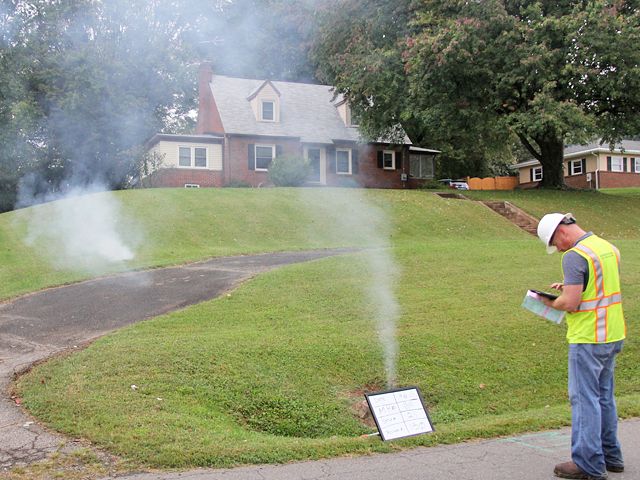
Common Causes of Smoke Test Failure
A smoke test for plumbing is a diagnostic procedure used to detect potential gas and air leaks in a plumbing system. During a smoke test, a special smoke-producing machine is used to force smoke through the pipes. If there are any leaks, the smoke will escape and be visible. Smoke testing is an important part of plumbing maintenance and an essential part of ensuring a safe and properly functioning plumbing system.
Unfortunately, smoke tests can sometimes fail, leading to costly repairs and other issues. The most common causes of smoke test failure include clogged vents, disconnected pipes, and failed seals. Clogged vents can prevent smoke from entering the pipes, while disconnected pipes can cause the smoke to escape into the atmosphere. Failed seals can also allow smoke to escape, and this can be a result of age, improper installation, or damage.
In order to avoid a smoke test failure, it is important to inspect the plumbing system for any signs of damage before conducting the test. This includes checking the condition of the pipes and seals, as well as looking for potential blockages in the vents. Additionally, it is important to hire an experienced professional to conduct the smoke test, as they will be able to identify any potential issues and avoid costly mistakes.
Smoke Test Troubleshooting Tips
Smoke testing for plumbing is a process of testing the integrity of a plumbing system. This process is used to check for any unseen or hidden leaks and to ensure that the entire system is functioning properly. The smoke test is conducted by pumping a non-toxic smoke through the pipes and fittings of a plumbing system. When the smoke is released, any leaks will be visible, allowing the plumber to identify and repair them.
Smoke testing can be used to detect a wide variety of problems in plumbing systems. It can help identify incorrectly installed fittings, pinhole leaks, joint seal failures, and misaligned pipes. It is a cost-effective and efficient way of troubleshooting plumbing issues and can help prevent costly repairs in the future.
In order to properly smoke test a plumbing system, the plumber should be aware of common troubleshooting tips. This includes properly venting the system before the test, ensuring that all pipes are connected, and sealing any openings that can allow air to escape. Additionally, the plumber should use a smoke machine that is specifically designed for smoke testing and should also use the appropriate smoke material.
Smoke testing is an essential part of any plumbing system and can help identify and fix any problems that may be present. By following the above-mentioned troubleshooting tips, a plumber can ensure that the smoke test is performed correctly and that any potential issues are efficiently addressed.
Alternatives to Smoke Tests
Smoke tests for plumbing are a reliable and cost-effective way to inspect and identify potential issues with a building’s plumbing system. However, there are other methods available to homeowners and plumbers when it comes to inspecting and diagnosing plumbing problems. Alternatives to smoke testing for plumbing include water pressure testing, thermal imaging, and acoustic testing.
Water pressure testing is a popular alternative to smoke testing, as it can quickly and effectively determine whether a plumbing system is functioning properly. To perform water pressure testing, plumbers use a pressure gauge to check the water pressure throughout the plumbing system. High water pressure can be indicative of a potential issue with the plumbing system, and it can indicate a need for further investigation.
Thermal imaging is another alternative to smoke testing for plumbing. This method uses infrared cameras to detect changes in temperature within the plumbing system. This can give plumbers valuable insight into the condition of the plumbing system, as it can pick up on hot spots that can indicate blockages or leaks.
Finally, acoustic testing is an alternative to smoke testing for plumbing. This method uses sound waves to detect changes in noise levels that can indicate a problem with the plumbing system. This can be especially useful for detecting blockages and leaks in hard to reach areas of the plumbing system, as the sound waves can travel through walls or other obstructions.
In conclusion, smoke tests for plumbing are a reliable and cost-effective way to inspect and identify potential issues with a building’s plumbing system. However, there are other methods available to homeowners and plumbers when it comes to inspecting and diagnosing plumbing problems. Alternatives to smoke testing for plumbing include water pressure testing, thermal imaging, and acoustic testing.
FAQs About the What Is A Smoke Test For Plumbing?
Q1. What is a smoke test for plumbing?
A1. A smoke test for plumbing is a process used to test the integrity of a plumbing system. It involves introducing a non-toxic smoke-producing compound into the plumbing system and observing whether the smoke is escaping from any of the plumbing fixtures or other unsealed areas. This test can help identify leaks, blockages, or other plumbing issues.
Q2. How is a smoke test for plumbing conducted?
A2. To conduct a smoke test for plumbing, a technician will seal off all drains and vents in the system and introduce a non-toxic smoke-producing compound into the pipes. The smoke will travel through the pipes and any unsealed areas will be visible when the smoke begins to escape. The technician will then be able to identify any areas that need to be repaired.
Q3. Are smoke tests for plumbing safe?
A3. Yes, smoke tests for plumbing are safe. The smoke-producing compounds used are non-toxic and will not cause any harm to people or pets. However, it is important to ensure that the technician conducting the test is experienced and qualified.
Conclusion
A smoke test for plumbing is an important tool for checking for leaks and other issues in plumbing systems. This test involves introducing a special smoke-producing fluid into the plumbing system and then looking for any leaks or other issues that the smoke may reveal. By doing this, plumbers can easily identify any problems and make the necessary repairs quickly and easily, thereby ensuring that the plumbing system is working properly.


